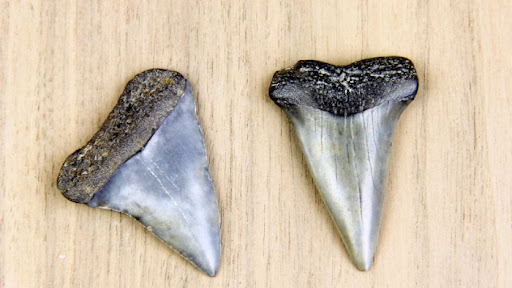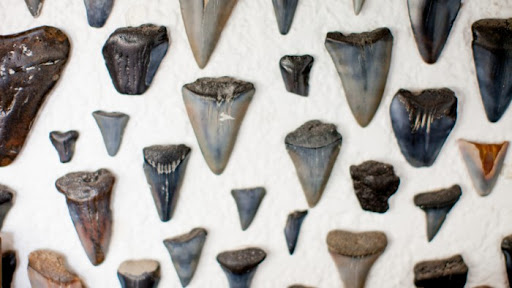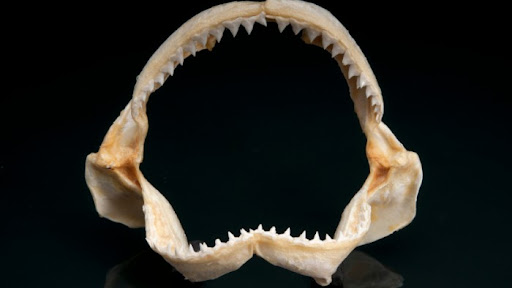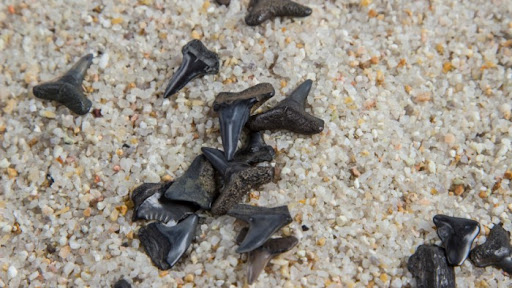What Makes Shark Teeth Black? Exploring the Factors Behind It.


Sharks are fascinating creatures, known for their powerful jaws and razor-sharp teeth. But have you ever wondered why their teeth are black? Shark teeth come in a variety of shapes and sizes, but their unique coloration is something that sets them apart. In this article, we’ll explore the factors that contribute to the black coloration of shark teeth.
Factors behind the Shark’s black teeth
Melanin

Sharks, like most animals, produce melanin – a pigment that gives color to hair, skin, and eyes. Melanin is primarily responsible for the black coloration of shark teeth. It is especially abundant in the outer layer of the tooth, which is called the enameloid. This is why shark teeth may appear lighter or even white towards the root, but darker towards the tip.
Dietary factors

The type of food that a shark eats can also contribute to the color of its teeth. Sharks that feed on squid or crustaceans, for example, may have darker teeth due to the high iron content in these foods. Iron can bond with the enamel layer of the tooth and create a black coloration.
Maturity

Another factor that can influence the color of shark teeth is the age of the shark. As sharks grow older, their teeth can become darker due to wear and tear. This is because the enameloid layer can become thinner over time, exposing more of the underlying dentin layer. Dentin is naturally darker than enamel and can cause the tooth to appear black or brown.
Environmental factors

The environment in which a shark lives can also have an impact on the color of its teeth. Sharks that live in shallow, murky waters with low light levels may have darker teeth. This is because the black coloration can provide better camouflage, making it easier for the shark to sneak up on its prey. Conversely, sharks that live in clear, deep waters may have lighter-colored teeth, as they do not need the same level of camouflage.
Tooth structure

Finally, it is important to note that not all shark teeth are black. Some species, such as the white shark, have teeth that are more gray or brown. This can be due to variations in tooth structure or composition. For example, the white shark’s teeth are serrated and have a unique shape that may affect their coloration.
How to Find Shark Teeth Why would you want to find shark teeth?

Some of them are valuable, plus they can be used to make interesting jewelry or to start a collection. Plus, there’s a chance you’ll find a tooth from a predator that lived 10 to 50 million years ago! While it’s possible to find teeth just about anywhere, your best bet is to search at a beach.
If you’re lucky enough to find fossilized shark teeth at the beach or in a river, the color they are can let you know how they were preserved.
Shark teeth buried in sediments absorb surrounding minerals, turning them from a normal whitish tooth color to a deeper color, usually black, gray, or tan. The fossilization process takes at least 10,000 years, although some fossil shark teeth are millions of years old!
How Shark Teeth Become Fossils
Shark teeth become fossils through a process called permineralization. When a tooth is lost or a shark dies, it sinks to the bottom of the ocean and becomes buried by sediment (if not buried by sediment, it eventually disintegrates). The sediment lacks oxygen, preserving the specimen. As more and more sediment accumulates, pressure builds up and forces minerals needed to quickly bury and protect the tooth from oxygen and bacteria that would otherwise decay it on the ocean floor.

Understanding the factors that contribute to the black coloration of shark teeth can help us learn more about these fascinating creatures. Whether it’s melanin, diet, aging, environment, or tooth structure, each factor plays a role in creating the distinct coloration we see in shark teeth. The next time you come across a shark tooth, take a closer look and consider the factors that may have contributed to its color.
